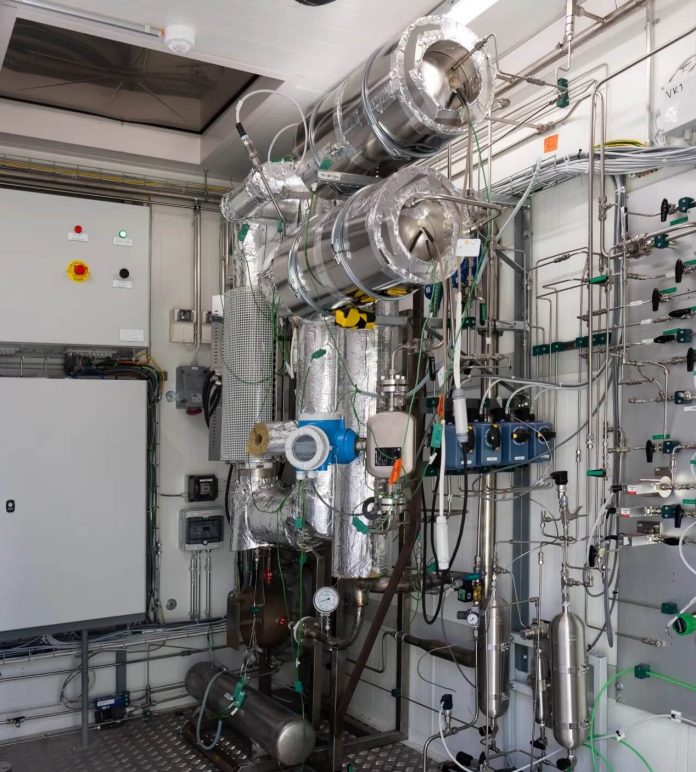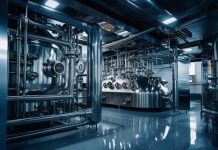
VTT, LUT University, and companies have opened a pilot plant in Espoo, Finland, to process captured carbon dioxide into compounds that can replace fossil raw materials in plastic products and chemicals.
The pilot plant, built in sea containers, started operations in August. Renewable energy, the hydrogen economy and bio-based carbon dioxide emissions from industrial sectors open significant opportunities for Finland to create new sustainable industrial activity.
Finland wants to utilise bio-based carbon capture as one way of reducing greenhouse gas emissions. For example, the Government Programme aims to significantly increase the use of technological carbon sinks.
The Forest CUMP research project of VTT and LUT University has investigated how bio-based carbon dioxide from, for example, the forest industry and waste incineration can be captured and converted into high-value products such as polypropylene and polyethylene. The promising results will now be put into practice as VTT and its partners open a pilot plant built in sea containers in the Bioruukki pilot centre in Espoo, Finland.
“Finland has huge potential to be one of the leading countries in utilising bio-based carbon dioxide,” says Juha Lehtonen, Research Professor at VTT. Lehtonen added, “Finland produces around 30 million tonnes of bio-based carbon dioxide per year. If captured and converted into products, Finland could become a major producer and exporter of polymers and transport fuels made from carbon dioxide and hydrogen”.
Polypropylene and polyethylene are the most common plastic types used in everyday life, which are currently mainly produced from fossil raw materials. Plastics play an important role in sequestering carbon dioxide in long-lasting products.
“The technology creates a significant export opportunity for renewable high-value-added products. Due to its extensive forest industry, Finland has a huge potential to utilise bio-based carbon dioxide. Outside the Nordic countries, large sources of bio-based carbon dioxide are rare,” Lehtonen says.
The Forest CUMP project is implemented in close cooperation with business partners as part of Business Finland’s Veturi ecosystem, which supports sustainable development. One of the Veturi companies is Borealis. Forest CUMP is part of Borealis’ SPIRIT programme, which promotes the green transition of the plastics industry.
“This is a significant development project to support our vision of capturing and utilising industrial carbon emissions by producing long-lasting or fully recyclable plastic products that can sequester carbon for a long time,” says Ismo Savallampi from Borealis.
The research project has studied the entire production chain from carbon capture to ethylene and propylene production. Ethylene and propylene are the raw materials for polyethylene and polypropylene. At this stage, they are produced at VTT Bioruukki from flue gas carbon dioxide. As per the press release, in the future, the technology can be brought into production wherever bio-based carbon dioxide is produced, such as in forest industry or waste incineration plants.





























